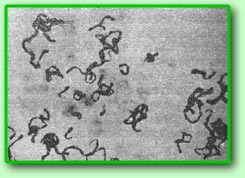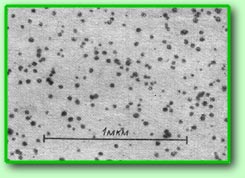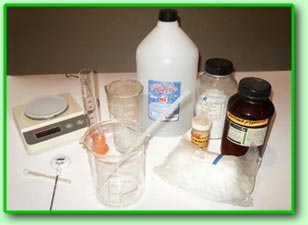|
9. Preparation
of chemical solutions
The
process of chemical processing of holograms is one
of the most critical steps in hologram making: first
of all, it is almost impossible to buy solutions
for chemical processing of holograms, you have to
prepare them by yourself. Quality of holograms depends
greatly upon accuracy of the chemical solution composition.
Holography as well as photography has a lot of methods
for chemical processing of holograms for different
types of photoplates and schemes of hologram recording
[1].
We are not going to consider extraordinary formulas
and methods. We'll examine a standard method of
PFG-03m photoplates chemical processing. You have
already studied that these photoplates have the
highest resolving power to register the finest interference
pattern of a reflect hologram recorded according
to Denisyuk's scheme. The main aim of the developing
process of Denisyuk's hologram is saving of this
interference pattern in the developed hologram.
Developer preparation
 Usual photographic developers
referring to the type of "chemical" developers
are not suitable for this purpose. During developing
silver bromide microcrystals in the emulsion layer
of a photoplate turn into tangles of metallic silver.
Their size is equal or exceeds the size of the interference
pattern period (see fig.). For the same reason developed
negative films and photographic papers are black
- silver balls absorb light (!). It has nothing
to do with an ordinary silver plate. Usual photographic developers
referring to the type of "chemical" developers
are not suitable for this purpose. During developing
silver bromide microcrystals in the emulsion layer
of a photoplate turn into tangles of metallic silver.
Their size is equal or exceeds the size of the interference
pattern period (see fig.). For the same reason developed
negative films and photographic papers are black
- silver balls absorb light (!). It has nothing
to do with an ordinary silver plate.
So called "physical" developers are used
for developing super high resolution photoplates
PFG-03m. There is a special component in these developers.
It is ammonium thiocyanate. Ammonium thiocyanate
dissolves crystals of silver bromide.  Practically the same process
happens in the fixer, but in the developer atoms
of silver bromide being in the solution are reduced
to metallic silver and then they fall on silver
bromide microcrystals (this process is called diffusive
transfer). Kinetics of this complicated process
is such that after development compact grains of
metallic silver appear and their size is close to
the size of silver bromide (see fig.). As a result
the interference pattern of the developed hologram
is completely preserved. Practically the same process
happens in the fixer, but in the developer atoms
of silver bromide being in the solution are reduced
to metallic silver and then they fall on silver
bromide microcrystals (this process is called diffusive
transfer). Kinetics of this complicated process
is such that after development compact grains of
metallic silver appear and their size is close to
the size of silver bromide (see fig.). As a result
the interference pattern of the developed hologram
is completely preserved.
Let us consider composition of GP-2 developer which
was worked out by Russian scientist Usanov Y.E.
Formulation of GP-2 developer and its modification
GP-3 are given below.
|
GP-2
|
|
GP-3
|
Methylphenidone
0.2 g
Hydroquinone 5 g
Sodium sulfite, (Na2SO3)
100 g
(anhydrous)
Potassium hydroxide (KOH) 5 g
Ammonium thiocyanate (NH4SCN)
6 g
Water up to 1 l |
|
Methylphenidone
0.2 g
Hydroquinone 5 g
Sodium sulfite, (Na2SO3)
100 g
(anhydrous)
Potassium hydroxide (KOH) 25 g
Ammonium thiocyanate (NH4SCN)
45 g
Water up to 1 l |
You
can see the developers have the same composition,
the only difference is quantity of some chemicals.
Let us consider the purpose of each chemical in
a brief way.
1. Methylphenidone and hydroquinone are developing
substances. If they work together they are more
active than each taken separately.
2. Sodium sulfite prevents rapid oxidation of the
developing substances and stabilizes work of the
fixer. It provides fine-grain development since
microcrystals of silver bromide are partly dissolved.
3. Potassium hydroxide creates alkaline medium in
the developer. The developing substances can actively
work only in alkaline medium.
4. Ammonium thiocyanate is the most "holographic"
component of the developer. (It is not used in the
photographic developers). It actively dissolves
crystals of silver bromide and provides super fine-grain
development.
 To prepare the developer it
is necessary to have all the mentioned chemicals,
a balance of 0.01 g accuracy, a thermometer of 0.1oC
accuracy, 2 retorts of 1l, a graduated cylinder
of 1 ml graduation, distilled water (see photo).
Cut several sheets of A4 paper in two and weight
out each chemical. You should put rubber gloves
on. Be very careful with potassium hydroxide. Avoid
its contact with your skin or clothes. To prepare the developer it
is necessary to have all the mentioned chemicals,
a balance of 0.01 g accuracy, a thermometer of 0.1oC
accuracy, 2 retorts of 1l, a graduated cylinder
of 1 ml graduation, distilled water (see photo).
Cut several sheets of A4 paper in two and weight
out each chemical. You should put rubber gloves
on. Be very careful with potassium hydroxide. Avoid
its contact with your skin or clothes.
It is known phenidone and methylphenidone are dissolved
in water badly but their dissolubility in the alkaline
solution is good. Pour 300 ml of water into a retort
and dissolve there potassium hydroxide. Add the
alkali by small portion and mix the solution by
a plastic stick thoroughly. Alkali dissolution in
water is an exothermic reaction (a reaction with
heat release). So that if you add all the alkali
weighed amount, the retort may be blown up because
of overheating. After the alkali has been dissolved
completely, dissolve phenidone. The solution will
become pinkish.
Pour 500 ml of water into the second retort and
then dissolve sodium sulfite and ammonium thiocyanate.
Ammonium thiocyanate has an unpleasant smell of
ammonia therefore you should work in a room with
good ventilation or under a hood. After all the
chemicals have been completely dissolved pour both
solutions together and mix them thoroughly and add
water to 1l. The prepared developer should be absolutely
transparent and have a significant smell of ammonia.
Filtrate the developer using a cotton wool tampon
and a funnel. Pour the developer into a bottle with
a hermetic stopper. Mark the bottle (name of the
developer and date of its production) and put it
in the refrigerator. The developer can be stored
in a refrigerator not less than a month.
Wash the retorts, the funnel and the plastic stick
carefully.
If the developer is turbid or it is brown or it
has another color or if there are flakes or sediment,
or there is no smell of ammonia, it means that one
of the chemicals is not suitable for usage. Check
if the chemical names and date of their storage
life are correct and if their weighed amounts are
accurate. Then try again to prepare the developer.
Fixer preparation
To
protect the developed hologram from light influence
(light can cause darkening), unexposed microcrystals
of silver bromide should be removed from the emulsion
layer. For this purpose a photoplate is processed
by a fixing solution where the rest microcrystals
of silver bromide are dissolved and removed from
the emulsion layer. The simplest neutral fixer is
used to fix PFG-03 photoplates. Microcrystals of
silver bromide have very small dimensions and their
dissolving in the fixer takes several seconds. Some
specialists even convince that it is not necessary
to fix the photoplates in GP-2 or GP-3 after their
developing since the most part of silver bromide
has been already dissolved in the developer. It
is right, but we should use the fixer to make the
process reliable.
Here is the fixer formula:
Sodium thiosulfate (hyposulfite)
(Na2S2O3*5H2O)
150 g
Na2SO3 (anhydrous)
50 g
Water up to 1l |
Dissolve
sodium sulfite in 700 ml of water. Then dissolve
sodium thiosulfate and increase the solution volume
to 1l, using water. Thiosulfate dissolving is an
endothermic reaction (a reaction with heat absorption),
so it is desirable to warm up water for this solution
to 40-50oC. The ready fixer is absolutely
transparent and it does not have any smell. Filter
the solution, pour it into a bottle with a hermetic
stopper, mark and put it in the refrigerator.
Wash the retorts, the funnel and the plastic stick
carefully.
Preparation
of alcohol solutions for hologram drying
Ethyl
alcohol solutions are used for qualitative drying
of holograms. It is possible to dry a hologram in
100% alcohol at once. But in this case alcohol will
absorb water rapidly and quality of drying will
worsen rapidly too. Therefore to save alcohols,
drying is executed by three steps - successively
in 50%, 80% and 100% alcohol. (To be precise, the
usual alcohol has 96% concentration). Prepare the
alcohol solutions in the following sequence:
50% alcohol - pour 500 ml of water and 500 ml of
alcohol and mix,
80% alcohol - pour 200 ml of water and 800 ml of
alcohol and mix.
Pour the alcohol solutions into hermetic bottles,
mark and put them in the refrigerator.
Wash the retorts, the funnel and the plastic stick
with running water carefully.
References
1. H.I. Bjelkhagen "Silver-Halide Recording
Materials (for Holography and Their Processing)",
Springer Series, USA, 1993.
2. T.H. James "The Theory of the Photographic
Process", Macmillan Publishing Co., New York,
1977.
3. Usanov Y.E. "Influence of the Developer
Composition upon the Holographic Image Properties",
Recording Mediums for Holography (Collected Articles),
Science, Leningrad, 1975, p. 98.
-->
|





